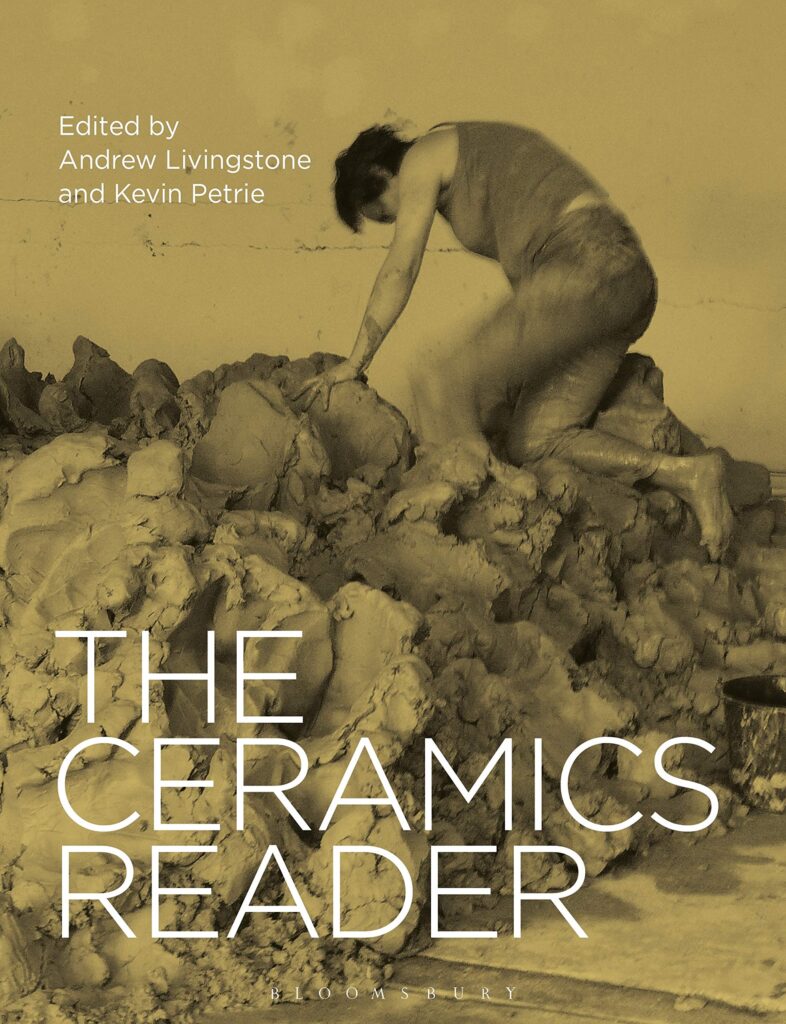Dr Natasha Mayo
Natasha Mayo’s ceramic research examines the sociability of clay: its capacity to perform as a discursive material through histories, geographies and physical encounters. It is an approach that seeks to establish the study of ceramics as a ‘living’ practice, and the creative process as an inherent part of life as it is lived, as much as any discrete act undertaken in the studio.

Co-authored with Melania Warwick, ‘Civic ceramics: shifting the centre of meaning’. In K. Petrie and A. Livingstone (eds), The Ceramics Reader. London: Bloomsbury, 2017: 531–5.
The interpretation of art is often seen as a monological process. On this view, analysis deals with the transformation of materials and intent by an artist, received by the perceptual capability of a viewer, each according to a single consciousness. Civic Ceramics works against this understanding. It builds upon the work done within structuralism, hermeneutics and relational aesthetics to recognize interpretation as a social process, and seeks to embody this understanding in the art-making process. The research uncovers some of the approaches that are pushing ceramics to the forefront of participatory engagement, and seeks to explore how we might better advance recognition of ceramics’ status as a politically and culturally responsive material.
Initial research exploring the discursive capacity of clay in contemporary practice can be read in this chapter, co-authored with Melania Warwick, in The Ceramics Reader. Case studies can be viewed in the films New Frameworks for Interpreting Ceramic Objects, a project devised in collaboration with, and funded by, the National Museum Wales as part of its 2016 Fragile? exhibition and conference.
Further information on Natasha Mayo’s work can be found on her website.
…
…
…
Ingrid Murphy
Ingrid Murphy’s ceramic research practice combines digital technologies with traditional ceramic processes in order to show how physical computing can be used to enhance the experience of the crafted object through touch, sound, proximity and connectivity.
…
Ceramics as Interface, 2017–19.

Much of the current discourse on the integration of digital technologies with traditional making and craft practices places the emphasis on the notion of ‘facture’, on how the thing is made (Adamson 2015, Johnston 2015, Sennett 2008). Ceramics as Interface looks at how digital technologies can be used to move the discourse beyond notions of facture by placing the focus on object interaction and perception. Through developing metallic lustres and glazes so that they could form circuits or touch sensors, a series of interactive ceramic artefacts with embedded, bespoke electronics was created. Audiences are invited to touch or approach the objects which responded, through a multitude of actions including sound, illumination, projection and object-to-object connectivity.
The artefacts were exhibited at a number of galleries, including: Farmleigh Gallery, Dublin 2017; JKK Museum, Jaipur 2018; Ruthin Craft Centre, Ruthin 2018–19; and V&A Museum, London 2019.
Lauren Heckler’s film of the artefacts and their production, Ingrid Murphy: Seen and Unseen, can be viewed here. Murphy’s account of the process can be read in her chapter ‘Metamaking and Me’ in The Ceramics Reader, eds K. Petrie and A. Livingstone. London: Bloomsbury, pp. 486–93. A preprint of the chapter can be downloaded here.
…
Augmenting Ceramics, 2014–19.

This group of works explores the ways in which augmented realities can extend ceramic practice. It looks at how digital forming and fabrication processes, and digital augmentation, can be used in the creation of interactive ceramic objects. The output is a series of artefacts and accompanying films, which were exhibited at selected international exhibitions focusing on innovative approaches in ceramics and craft practice. The production process involved creating digital physical artefacts and manipulating them in the digital realm before exporting them to become physical assets once again and using these to link to embedded digital content.
The artefacts were exhibited at a number of galleries, including: Farmleigh Gallery, Dublin 2014; JKK Museum, Jaipur 2018; Mission Gallery, Swansea 2019; and the British Ceramics Biennale, Stoke on Trent 2019.
The artefacts can be viewed in the film She Danced Him Into a Flat Spin from the Cultural Icons exhibition at the British Ceramics Biennial, 2019. Murphy’s account of the process can be read in her conference paper ‘Beyond Facture: What is 21st-Century Craft?’, College Art Association Annual Conference, New York, 2017.
…
Further information on Ingrid Murphy’s work can be found on her website.
…